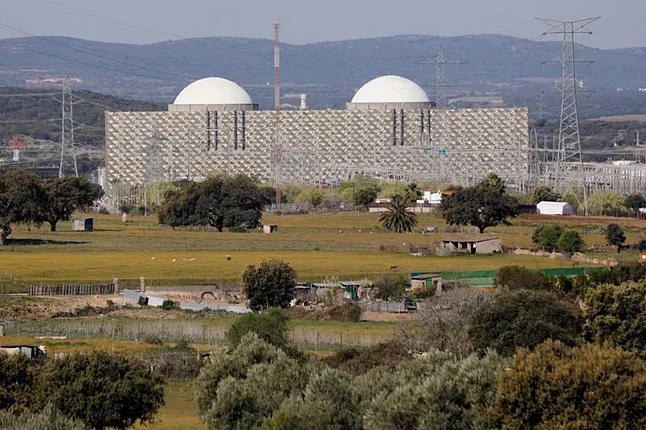The Government accelerates its roadmap for the dismantling of nuclear power plants in Spain despite the recent debate on their continuity and the position of the owning companies to extend their operational life. The first affected is the Almaraz plant (Cáceres) and its two reactors, which will close in 2027 and 2028, respectively, if nothing prevents it.
The dismantling process started on Tuesday with the Council of Ministers authorizing Enresa - the public company responsible for managing radioactive waste and dismantling Spanish reactors - to "contract the engineering service for the dismantling of the Almaraz nuclear power plant". This is an essential order to comply with the General Radioactive Waste Plan and the Integrated National Energy and Climate Plan, which includes the progressive closure schedule of nuclear facilities signed in 2019 between Enresa and the owning companies of the plants.
Specifically, the approved amount today is 23.7 million euros, excluding VAT, which corresponds to the maximum amount of a contract that includes the preparation of project management documentation and tools, the preparation of initial studies and design engineering, the preparation of technical specifications and project plans, and the preparation of documentation for dismantling authorization.
Enresa announced last June that it would hire these services, but the necessary approval by the Council of Ministers was frozen for ten months until this Tuesday, officially starting the countdown that will end with the last plant in 2035 with the shutdown of Trillo.
However, the owning companies of Almaraz have shown willingness to extend the plant's operational life beyond the planned period, at least for three more years, as reported by EL MUNDO. Thus, Iberdrola, Endesa, and Naturgy, participating in CNAT (Almaraz-Trillo Nuclear Power Plants), the company owning both plants, plan to hold a shareholders' meeting next May to discuss a future solution for these plants.
The Government Delegate in Extremadura, José Luis Quintana, stated today that the central government "has the obligation to move forward" - referring to the Council of Ministers' authorization to Enresa to start the dismantling of the plant - as long as they "have not yet shown any intention" to request an extension.
Thus, Quintana argued that the Government "could not stand still," which is why the bidding process was initiated to design the dismantling works of this nuclear plant, as otherwise "there could be a financial liability for the companies that could claim against the Government."
Industry sources responded to Quintana that nuclear energy "remains cheap but has ceased to be profitable due to the extremely high tax burden it bears."
On the other hand, the spokesperson for the Extremadura Regional Government, Victoria Bazaga, regretted that the Government continues with its dismantling plan: "What we would like is for the Council of Ministers to approve a new renewal and extension of this Almaraz nuclear plant. In Extremadura, we do not deserve dismantling; what we deserve are opportunities," she stated.
Fernando Sánchez, president of the 'Yes to Almaraz, Yes to the Future' platform, also responded to the Government Delegate's statements by pointing out that "some want to close Extremadura's first industry without even having a negotiation." He added that "our platform advocates for dialogue between the parties before making this decision that affects thousands of jobs and to avoid making a wrong decision in these times where energy sovereignty is of paramount importance."
Precisely, Unit II of the Almaraz nuclear power plant will resume its energy production activity between tonight and the early hours of Wednesday after a week of shutdown due to "the economic unviability caused by the high taxation of nuclear plants, the low electrical demand in recent days, and the high generation of renewables," as stated by sources from the plant last Tuesday.
The production process restarts in Unit II while there is no set date for the same operation for Unit I. Both units were scheduled to stop on April 15 due to being "out of the market."
This is not the first time this has happened. In March of last year, Unit I of Almaraz also stopped for 18 days due to a similar situation in the energy market.
